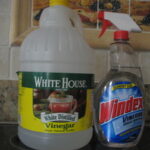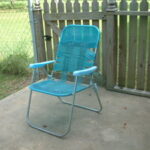My best friend and I worked our way through college by cleaning house. Back in those days, our customers provided their own cleaning supplies, but we insisted on providing our own cleaning rags. Our customers didn’t realize that old rayon shirts and poly nylon jackets didn’t make good rags at all.
Cleaning rags can’t be made of just any type of material. Man made materials such as polyester, nylon, rayon, spandex and other hyphenated fabrics don’t have the absorption needed to make a good cleaning rag. Sure, they may do a fine job of applying furniture wax or Windex, but when it comes to polishing surfaces to a high shine, you can forget it. All these man made materials can do is merely push the cleanser around in circles and leave ugly looking streaks.
The best cleaning rags are made of cotton. Thicker cotton rags are more absorbent and work nicely for washing windows, wiping down counters, scrubbing out sinks and tubs, and mopping floors. For polishing furniture and wood trim molding, cleaning out light fixtures, and polishing the faucets, a lighter weight cotton rag is best.
So what kind of old household textiles do you make rags from?
For absorbent cleaning rags
To make thick cotton rags, try using old cloth diapers, old flannel blankets, old dish towels, and old bath towels. While the diapers are great to use the size they are, flannel blankets and towels must be torn down to a workable size. 12 x 12 inches is an ideal size for most cleaning tasks.
To tear a towel into rags the easy way, simply use a scissors to make a notch every 12 inches (more or less) along one of the long edges. Once the notch has been cut, grab the material on either side of the binding with the thumbs and fingers to tear the material. You’ll discover that the cotton will tear along the weave very easily. Once the towel has been torn into five equal pieces, the piece can be torn again, this time from top to bottom to create the 12 x 12 inch rag.
For lightweight dusting and polishing rags
Thinner rags can be made from old flannel pajamas, cotton sheets, tee shirts, and men’s cotton dress shirts. Before turning any of these old clothes and linens into cleaning rags, do remove the hems, seams, and buttons first. The buttons will scratch the surface of the furniture, and the seams will smear cleanser around instead of polishing the surface. Once the seams and buttons have been removed, cut or tear the remaining material into 12 x 12 inch squares.
For socks, these can be left as is. Socking are terrific for polishing brass and silver, and can be worn over the hand to dust rails and wooden chairs.
Making a rag bag
To store my cleaning rags, I made a rag bag from an old Navy duffel bag which is suspended from the ceiling of the basement. The bag is easy to find, easy to reach, and convenient to unhook and bring upstairs for cleaning tasks. To store your rags, a string bag or nylon mesh bag will also work.
Other materials
So what about those other raggedy clothes? For old clothes made of man made materials, or materials that are just too linty to use for cleaning, these can be kept in a separate container and used for automotive and painting rags. Since man made materials are harder to tear than cottons, these rags should be cut with a scissors into a manageable size before being placed in the ragbag.
As you’ve probably already discovered, not all cleaning rags clean equally as well. For the brightest shine, it’s best to use clean cotton rags for those indoor tasks and leave the other textiles for the dirty work.






